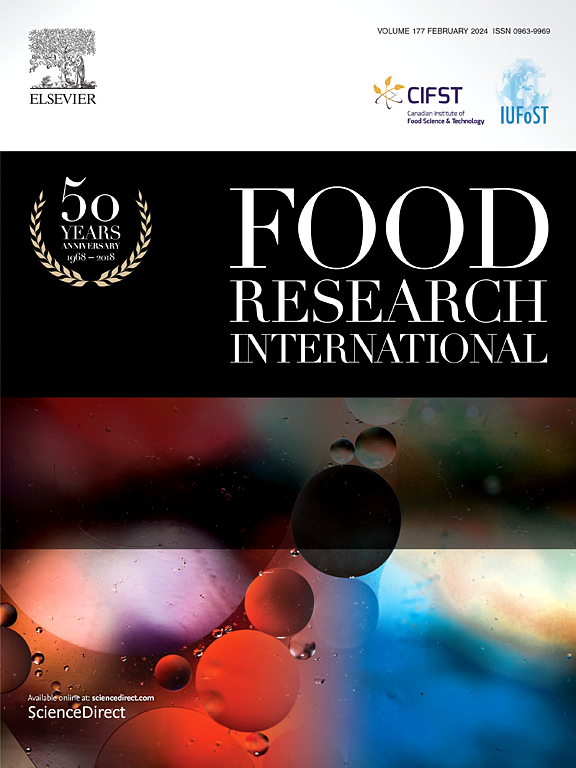利用代谢组学和1H qNMR分析普洱茶不同贮藏年限的非挥发性代谢物谱和口感品质
IF 7
1区 农林科学
Q1 FOOD SCIENCE & TECHNOLOGY
引用次数: 0
摘要
普洱生茶(PRT)是一种后发酵茶,因其复杂的风味和促进健康的特性而受到重视。虽然延长储存增强了其感官属性,但支撑风味进化的十年尺度代谢动力学仍未被探索。该研究全面表征了PRT在10年储存期间(2012 - 2023)的非挥发性代谢组学特征和风味变化。综合感官评价和电子舌分析表明,由于氧化和陈年样品的醇厚增加,冲剂逐渐变暗,尽管仪器味觉区分有限。非靶向代谢组学鉴定出3384种代谢物,其中619种在所有储存年份都一致存在。重要的是,γ-亚麻酸和没食子酸表现出显著的时间依赖性积累,通过1H定量核磁共振(qNMR)进行了定量验证。这些代谢物成为区分PRT储存时间的强大标记,揭示了其长期老化特征的新的生化驱动因素。本文章由计算机程序翻译,如有差异,请以英文原文为准。

Non-volatile metabolite profiles and taste quality of Pu-erh raw tea on different storage years by metabolomics and 1H qNMR
Pu-erh raw tea (PRT), a post-fermented tea, is prized for its complex flavor profile and health-promoting properties. While extended storage enhances its sensory attributes, the decade-scale metabolic dynamics underpinning flavor evolution remain unexplored. This study comprehensively characterized non-volatile metabolomic profiles and flavor changes in PRT across a 10-year storage period (2012−2023). Integrated sensory evaluation and electronic tongue analysis indicated progressive darkening of the infusion attributed to oxidation and increased mellowness in aged samples, though instrumental taste differentiation was limited. Untargeted metabolomics identified 3384 metabolites, with 619 consistently present across all storage years. Crucially, γ-linolenic acid and gallic acid demonstrated significant time-dependent accumulation, quantitatively validated via 1H quantitative NMR (qNMR). These metabolites emerged as robust markers for discriminating PRT storage duration, revealing novel biochemical drivers of its long-term aging characteristics.
求助全文
通过发布文献求助,成功后即可免费获取论文全文。
去求助
来源期刊

Food Research International
工程技术-食品科技
CiteScore
12.50
自引率
7.40%
发文量
1183
审稿时长
79 days
期刊介绍:
Food Research International serves as a rapid dissemination platform for significant and impactful research in food science, technology, engineering, and nutrition. The journal focuses on publishing novel, high-quality, and high-impact review papers, original research papers, and letters to the editors across various disciplines in the science and technology of food. Additionally, it follows a policy of publishing special issues on topical and emergent subjects in food research or related areas. Selected, peer-reviewed papers from scientific meetings, workshops, and conferences on the science, technology, and engineering of foods are also featured in special issues.
 求助内容:
求助内容: 应助结果提醒方式:
应助结果提醒方式:


